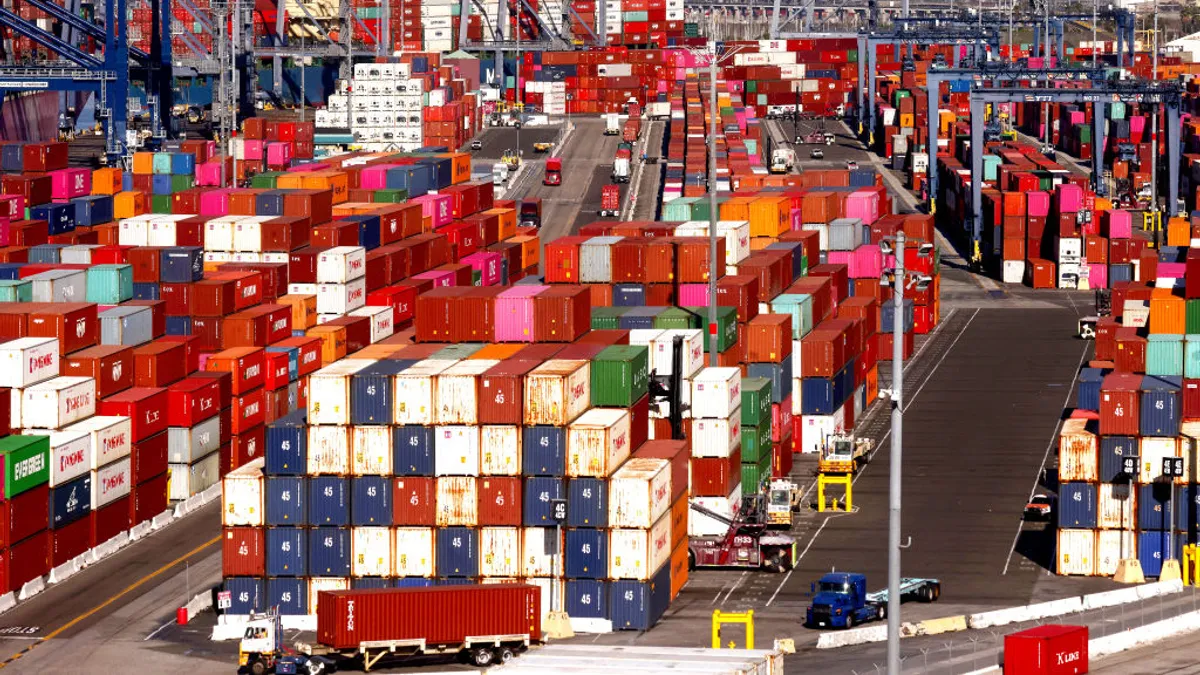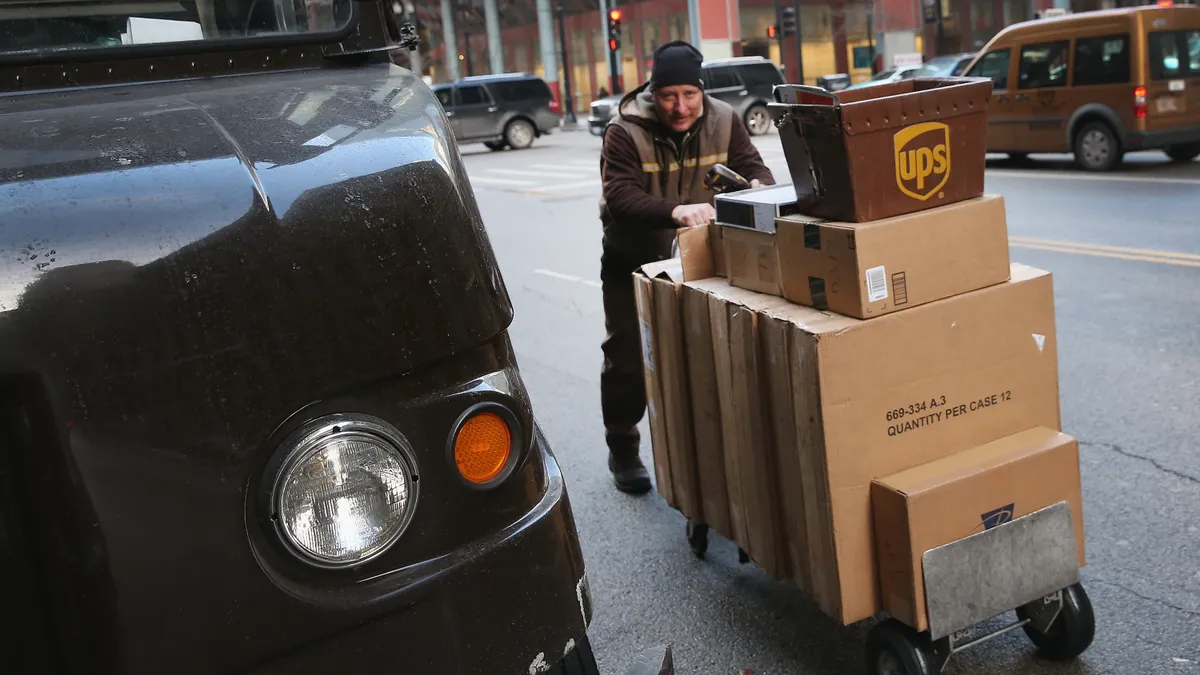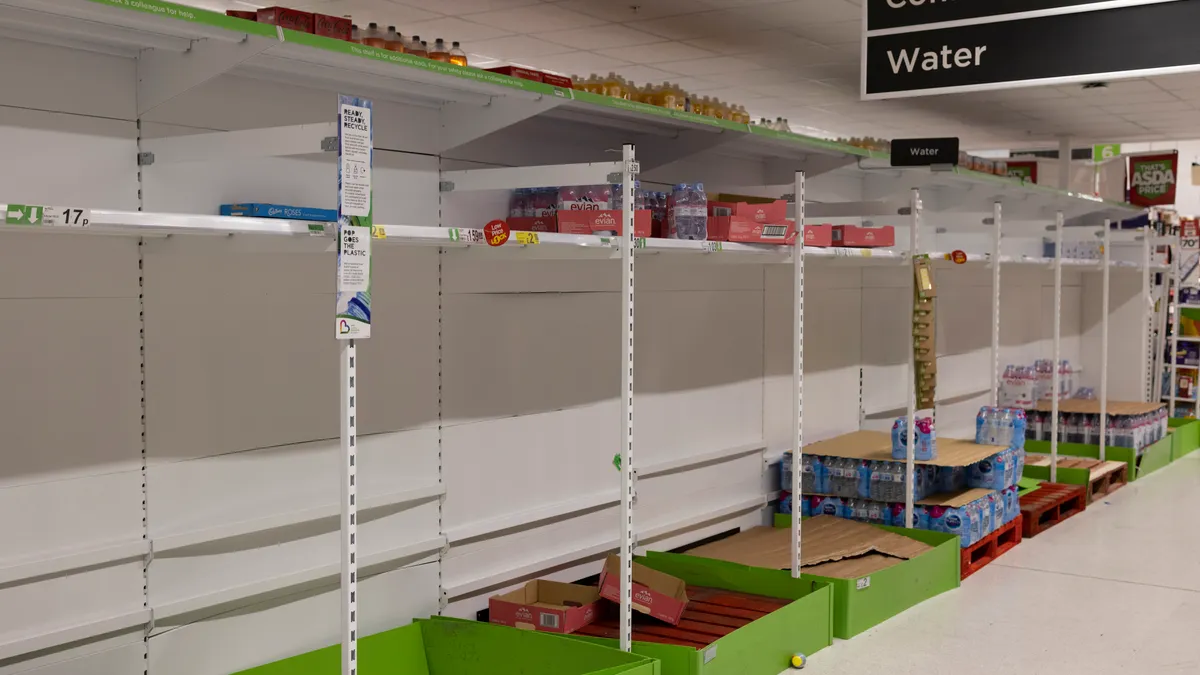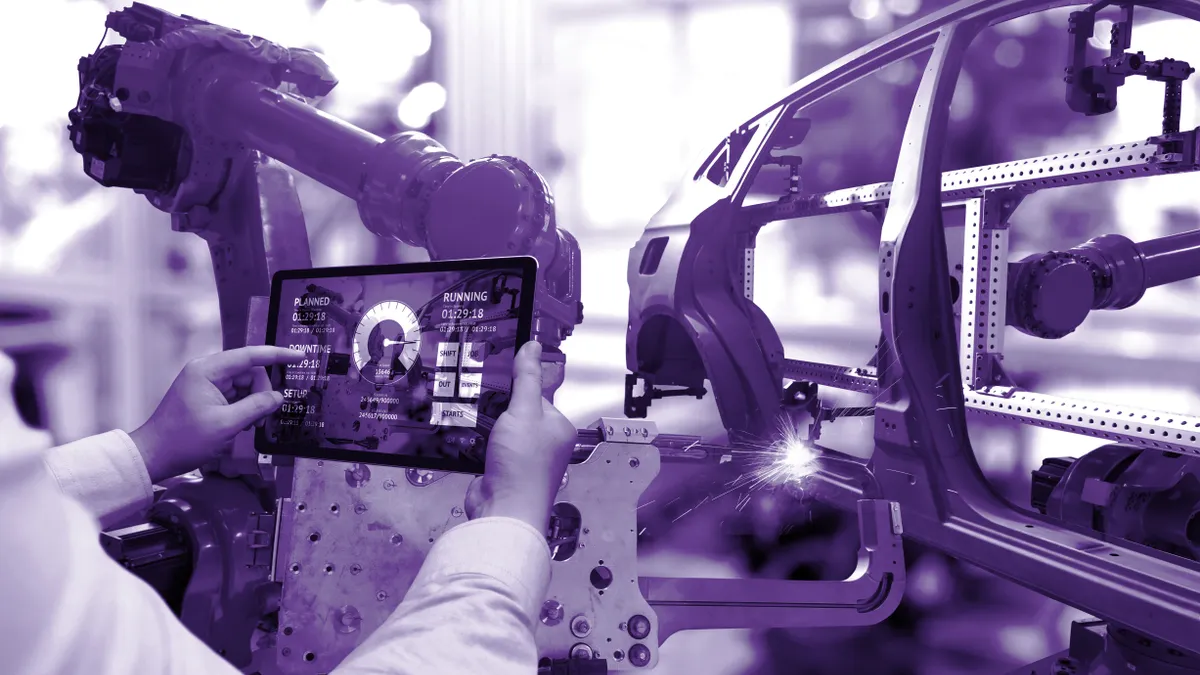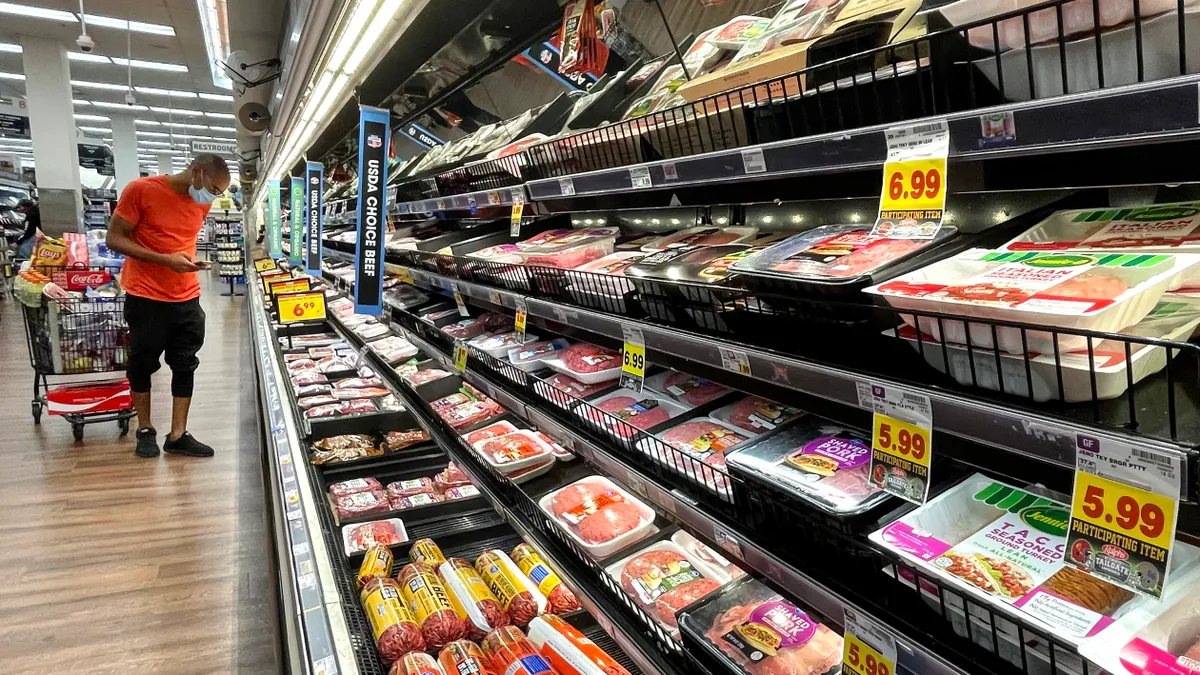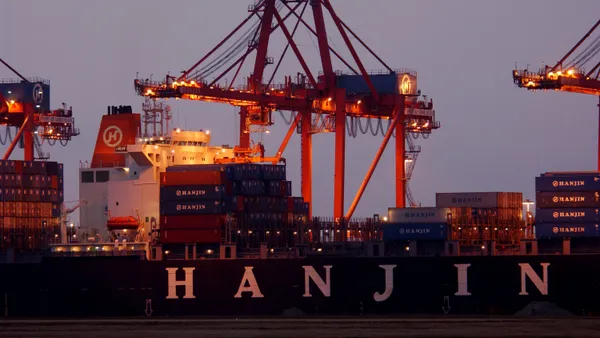For supply chains, the pandemic has brought unprecedented levels of disruption. The specific confluence of events was beyond anybody's ability to foresee. But, at least in a general sense, everyone should have expected something like the year that just passed to happen.
Risks of severe stress and even failure are built into modern supply chains — unintentionally, but they were there, for decades, for everyone to see. The very idea of a globalized "supply chain" is at least in part defined by risk.
When linking up dozens or even hundreds of firms, with thousands of workers among them, all trying to move in coordination across continents to complete the task of of getting products on shelves — all sorts of things can go wrong. And there was never any reason why a whole bunch of things couldn't go wrong at the same time.
For all the talk of crisis and collapse, the system largely held through the holiday period. But the past two years have laid bare vulnerabilities that have long existed in the system. To name a few: lack of capacity, manufacturing concentration by geography, length and complexity of supply chains, and scale mismatches among links in the chain.
The question for retailers, brands, vendors and governments around the world is whether supply chains will be rebuilt for the future, with unknown crises in mind, or if the industry reverts back to "normal" once the current backups in the system ease.
Concentrated risk
To name just a few things that went wrong in 2021: A ship famously became lodged in Egypt's Suez Canal, blocking traffic for six days. China closed one of the busiest ports in the world because of a COVID-19 outbreak. Vietnamese factories were fully or partially shut down because of outbreaks, wreaking havoc on apparel and footwear production.
COVID-19 also disrupted manufacturing areas in Bangladesh, India and other major producing countries, not least of all China. A demand surge in the U.S. led to shortages in cargo space, shipping containers and other equipment that led to skyrocketing ocean freight prices.
While tied together by the pandemic and its consequences, the problems were different and exposed different vulnerabilities in the system.
"I think this was a wake up call for a lot of companies."

Ron Scalzo
Senior Managing Director, FTI Consulting
Consider the impact COVID-19 outbreaks had on ports and factories in China. On the surface, it seems like a pandemic-induced problem. But a supply chain system less reliant on Chinese production could absorb those shocks with less pain and for fewer players.
"Some of our clients are really taking a hard look at spreading risk so that it's not so China-centric or even Asia-centric," said Ron Scalzo, senior managing director in FTI Consulting's business transformation practice. "It's a hard thing to do. It's hard to get out. There's so much infrastructure and so much manufacturing capacity that's been built up in China. So it's not like flipping a switch."
Scalzo added: "It's easy when the disruption event, the black swan event — whatever you want to call it — is over to shift right back to the lowest cost solution, which remains China. But I think this was a wake up call for a lot of companies."
Supply chains aren't just concentrated by geography alone. In many cases, production of a good can be centered on just a few factories. Garphil Julien, research associate with Open Markets Institute, a nonpartisan group that advocates for more aggressive anti-monopoly policies, points to the market for semiconductors as a prime example.
That single component feeds into countless consumer electronics and other products retailers and brands depend on. "Semiconductors were a product the U.S. used to make in a relatively large capacity," Julien said. "Over the past few decades, you've seen consolidation of the semiconductor industry, the stripping of capacity, the shutdown of plants across the U.S. to a point where there are only three integrated device manufacturers, three companies that actually make semiconductors."
Along with the potential for price gouging, supply concentration also poses an obvious supply risk. It's the old saw about too many eggs in one basket. If a hurricane or earthquake — or a plague — hits the sole factory producing a given good, there is no more of that good until the factory has recovered.
Super-sized clogs
It's not just supply itself that is concentrated. The top eight carriers control more than 80% of the market for ocean freight capacity, and carriers further form alliances with each other to expand their scale and reach. And while shippers saw freight prices blow up by many multiples, carriers had a phenomenal year. Bloomberg reported recently that ocean-freight carriers made an estimated $150 billion in profits for 2021, up nine times over from the previous year.
"There is hyper-consolidation of shipping lines, and they have no incentive to invest in capacity," Julien said. "At the same time, they're making record profits. You really haven't seen anything like it. It's really frustrating at the same time, we're just really captured by these shipping companies."
Craig Philip, professor and director of Vanderbilt's Center for Transportation and Operational Resiliency, thinks the capacity crunch is short-term. "The market has reacted very quickly. The order book for new vessels has exploded," Philip said. "If we'd been having this conversation pre-COVID, we would be asking questions about whether the companies that own and operate those ships were financially vulnerable because there's too much capacity in the system."
One major source of that capacity is the colossal size of freight ships. When those huge ships connect to infrastructure and supply chain links that don't match their scale, that can be the source of bottlenecks, according to Philip.
The most visible was the blockage in the Suez, when a single, askew ship blocked an entire shipping artery for days at a time. "When I cut my teeth in this business in the '80s, the largest ship carried 2,500 or 3,000 containers," Philip said. "That ship that got stuck in the Suez Canal carried 25,000 containers. Wow. It's just mind-blowing."
Philip added: "So that's one thing that we've supersized. The other thing is the distances that we think things can and should travel on a routine basis."
When gargantuan ships traveling interminable distances meet with modes of the supply chain not up to the same scale, problems can arise.
"There are many elements of that supply chain that haven't been supersized in an equivalent way," Philip said, pointing to trucking as well as domestic port infrastructure and concentration of traffic around two major ports in Southern California, among other things. "And so now we're confronting the places where the frictions in the system become not a nuisance, but become a real, real big issue."
'Anything but agile'
Even for those companies that have worked on their supply chain over the years, many gaps exist.
"One thing we've seen is that supply chains are anything but agile," said Matt Garfield, managing director with FTI. "Supply chain agility has been the bingo buzzword of the past decade. But what we've seen coming out of this is that companies design agility to solve specific tactical problems. 'If I have this lever to pull, I can be agile here.' But what they didn't develop the agility for was the confluence of all these levers being pulled at the same time."
Retailers have also long been counting on the just-in-time inventory model, which obviously is scrambled when backups create widespread and often protracted delays. Companies "are at least beginning to partially rethink that whole inventory position and whether there should be more reserve or safety stock, as well as a move toward nearshoring and onshoring," FTI's Scalzo said.
"Shareholders don't necessarily like inventory."

Garphil Julien
Research Associate, Open Markets Institute
Historically, retailers and brands shifted to lean inventory models to cut down on their costs of holding inventory, while limited inventory is also seen as a hedge against price discounting. But the cost accounting for lean inventories, like the low costs of production in China, doesn't typically factor in the costs of system breakdowns and black swan events.
"In the past we used to have more inventory. Inventory was a good risk mitigation practice," Julien said. "Shareholders don't necessarily like inventory."
When crisis hit the global supply chain, firms reversed long-standing practices, which only made bottlenecks worse. "It's no longer a just-in-time world. It's a just-in-case world — just in case we don't get it," said Craig Austin, assistant teaching professor in at Florida International University, who has worked in industry in operations, logistics and freight. Businesses, Austin added, are stockpiling "because they're not sure that they can get their merchandise just in time."
The warehousing, freight and other expenses to stockpiling raises overall costs for retailers, who are passing the costs on to consumers and in turn helping to push inflation, according to Austin. "Because they're stockpiling, you're paying for that inventory they're carrying," Austin said. "They have fewer [employees], and they have to raise wages — you're paying for it. And there's also a shortage of equipment, there's not enough containers."
With inventory, as with so many things in supply chain, size matters. The average inventory days for the largest retailers and their suppliers (with revenue above $100 million) have actually decreased from 2019 to 2021, from 98.6 to 81.5, according to RapidRatings data compiled for Retail Dive. For medium-sized companies, inventory days increased slightly, and for small retailers the days increased significantly — by more than 39 days.
As RapidRatings Chairman and CEO James Gellert explained, larger retailers have demonstrated "a high level of resiliency" during the pandemic, with pricing power and the scale to compete for product. Smaller players, on the other hand, may have struggled to sell product as fast or have been stockpiling for the many uncertainties of the pandemic era.
Shining a light on supply chains
Inventory is one piece of the puzzle, but setting inventory levels is ultimately the easy part. Harder is managing an extensive, global network of firms that form what is called the "supply chain."
By its very nature, the supply chain eludes the control of retailers and brands, compared to a world where companies owned their own factories, when brands themselves produced the goods that bore their name. Not only do companies lack control over the external pieces of their supply chain, often they lack information and knowledge about their partners and their operations.
Gellert said that amid pandemic disruption, some companies struggled to manage risks in their supply chains because of communication issues. In some cases, companies that were less prepared in supply chain risk management were even scrambling to figure out contact information for people at suppliers offices.
With less control, and all the risk that brings, agility has become the byword. But how do companies actually get that?
Jess Dankert, vice president for supply chain at the Retail Industry Leaders Association, said large retailers are working toward building more "close collaborative relationships" with suppliers and other supply chain service providers, with open lines of communication and fluid information exchange.
"A big piece to agility is visibility, knowing what's happening out there in your supply chain, to know not just where there's a bottleneck or obstacle, but also where there might be," Dankert said.
Visibility is so important Dankert calls it the "holy grail" of supply chain and an area where retailers are investing. It takes talent, technology, data analytics, system interoperability among partners, and technological and strategic "control towers" to manage it all.
Many expect the bottlenecks, backups and freight price spikes to continue through 2022, if not further out.
Hedging against future crises is going to take a kitchen sink full of tools for companies, along with infrastructure investments in ports, transportation, warehouses and other areas bottlenecks occurred. All of which will take years to build out.
It could also take a broad rethink of supply chains and their importance inside retail organizations, which historically have prioritized marketing and merchandising.
"One thing I think we will see is supply chain having a bigger seat at the table," FTI's Garfield said.



